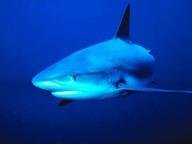Quiz Answer Key and Fun Facts
1. Sharks are examples of creatures that are supremely adapted to their environment. How long have sharks roamed the seas?
2. Scientific evidence shows that ancient sharks had bones and that the change to an 'all-cartilaginous' skeleton, by losing bone tissue, was a positive evolutionary process.
3. Using the great white shark (Carcharodon carcharias) as an example, what sort of skin do most sharks have?
4. All sharks have sharp, triangular or pointed teeth.
5. Like most animals, sharks need oxygen. Which of the following methods do *ALL* species of sharks utilise to respire?
6. Mammals and birds have four chamber hearts, and amphibians have three chambers. How many chambers are there in a shark heart?
7. White sharks have been labelled "cold-blooded" killers. But can these types of sharks regulate their temperature?
8. Most fish maintain buoyancy with the use of a swim bladder. Do sharks have swim bladders?
9. Sharks have sensory tissue called ampullae of Lorenzini which are not present in most mammals. What is their function?
10. Sharks have different types of fin for movement, lift and stability. Which of the fin types is associated with lift (ability to move up or down in water)?
Source: Author
1nn1
This quiz was reviewed by FunTrivia editor
rossian before going online.
Any errors found in FunTrivia content are routinely corrected through our feedback system.
